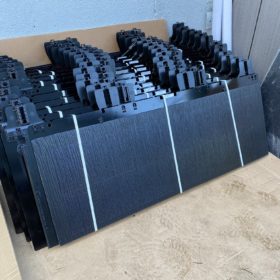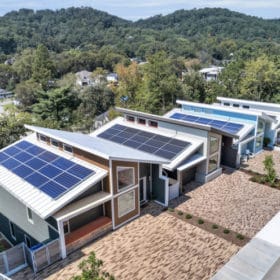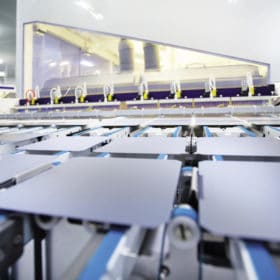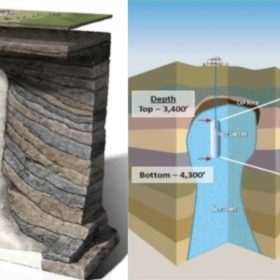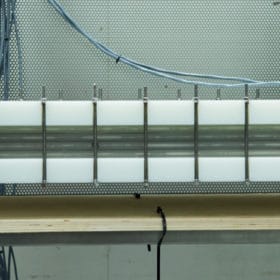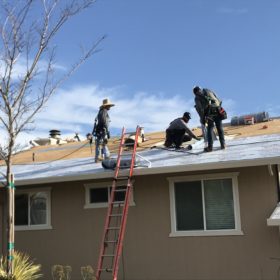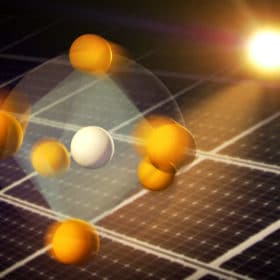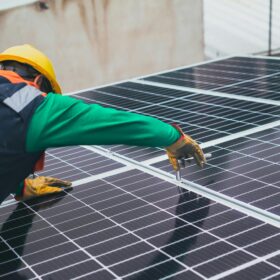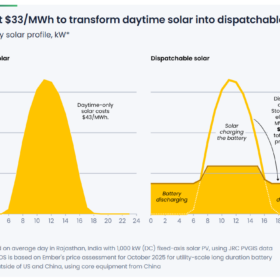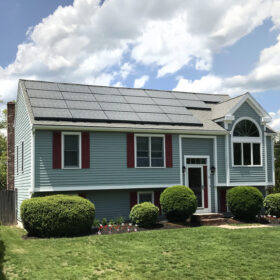Raising the efficiency of polycrystalline cells with new luminescent EVA film
Chinese researchers have developed a pure EVA film, which they claim can enhance the conversion efficiency of conventional crystalline solar cells by around 0.50%. The film is able to convert UV light into strong visible light.
MIT and NREL see solar modules reaching well below 20¢ per watt
Although, the author of this article sees a path below 15¢ per watt. Researchers at MIT, working with financial modeling teams at NREL, have projected the electrical losses and financial gains of thinning solar cells from the current 160 micrometers to 50 micrometers.
Does Tesla make solar glass roof tile in its Buffalo, New York factory? Or in China?
Elon Musk has spoken of the “exponential” ramp-up of its solar glass tile at the Buffalo factory. But pv magazine has found indications that the solar tile product is coming from a Chinese source.
A new technique to get the right angular-tilt for PV panels
A U.S. scientist is proposing a new approach to calculating the optimum angular-tilt of PV panels for a planar surface at a particular site. In his view, the new technique may unlock innovative yield-optimization methods for the installation of PV systems.
Shifting to a larger solar wafer format: the rise of M6
The shift to the larger M6 wafer format could occur faster than many have expected. Promoted heavily by mono giant Longi, the format is said to be a good fit for both cell and module production, while still allowing for relatively trouble-free integration into PV arrays.
Green hydrogen backed by US solar firms 8minute and Intersect Power
Two solar firms have helped launch an industry group promoting green hydrogen, which is produced using solar or wind power. The group backs a Utah project that would use 30% green hydrogen in 2025 and 100% green hydrogen by 2045.
Zinc-air battery being deployed in New York aims for extremely low $45/kWh cost
New York state has chosen Zinc8’s zinc-air battery to demonstrate the technology’s viability over a three-year period in a 100 kW/1 MWh storage system.
More Tesla solar roof tile installations in the wild, a photo gallery update
We discover two more Tesla solar roof tile installations this week and update a few more. That leaves 998 more roofs to document this week, given Elon Musk’s claim of 1,000 roofs per week by the end of 2019.
All-inorganic perovskite solar cell hits 16.1% efficiency
Researchers from the City University of Hong Kong have developed an all-inorganic perovskite cell with an electron-pair donor which offers a pair of non-bonding electrons. The cell was developed by applying that ‘Lewis base’ small molecule to passivate the inorganic perovskite film.
Panasonic claims 16% efficiency for lightweight perovskite solar module
The device has an area of 802cm² and thickness of 2mm. The manufacturer claims it improved module performance through an inkjet coating method and a reduction in weight by using thin glass substrates.

